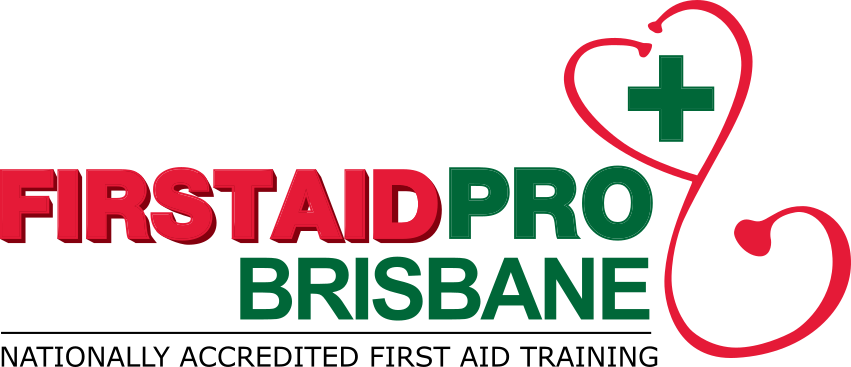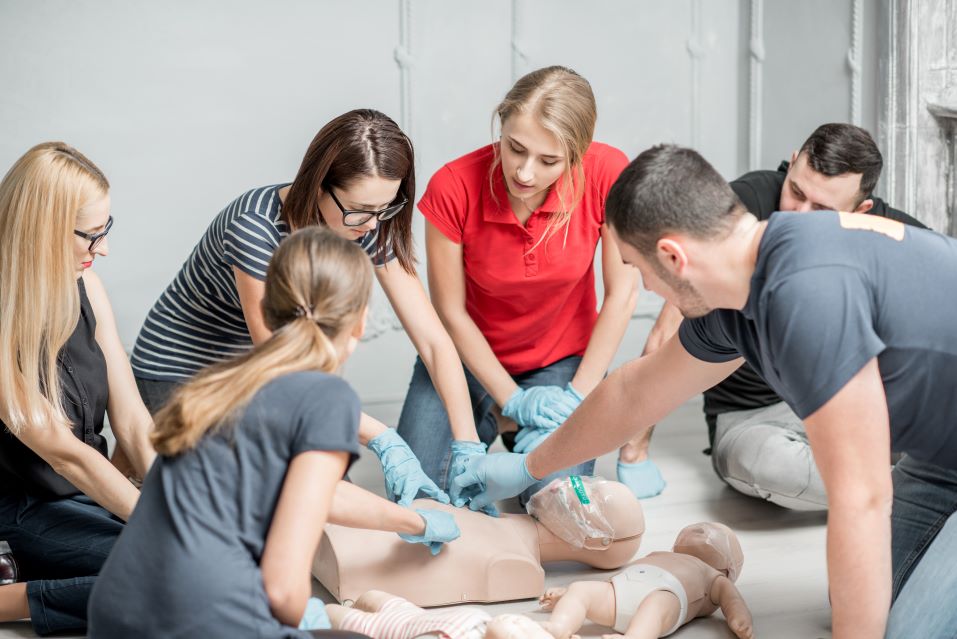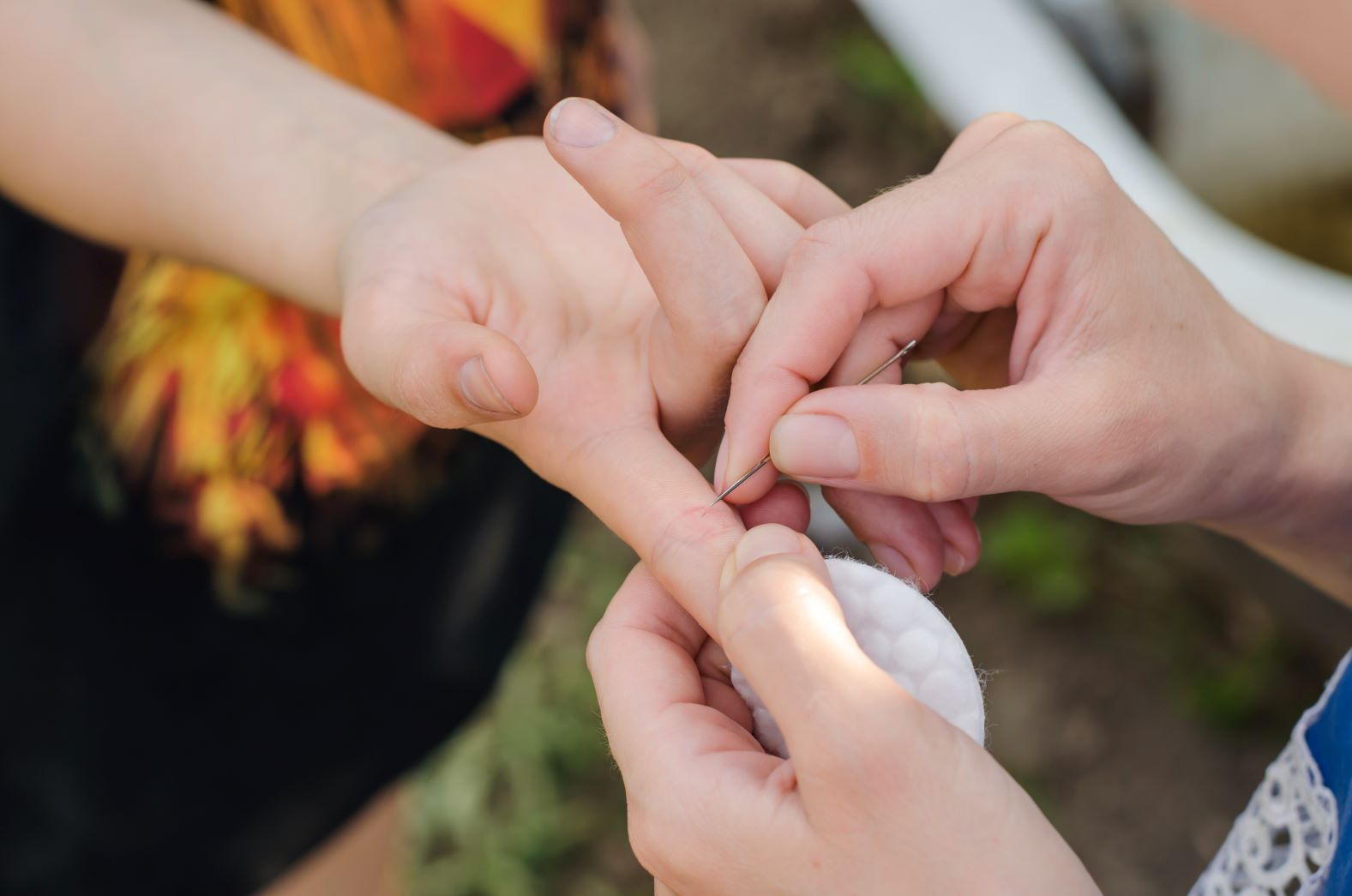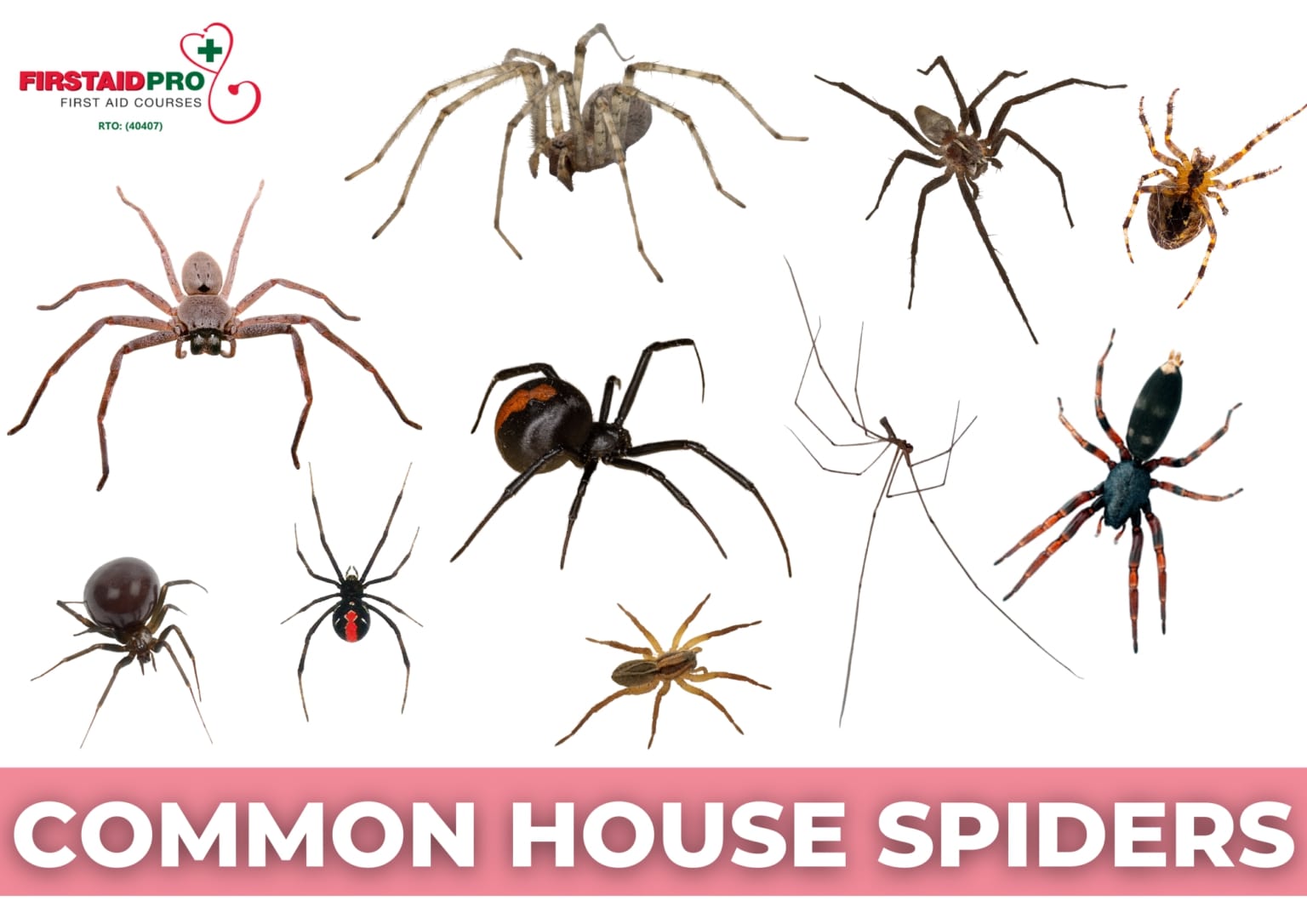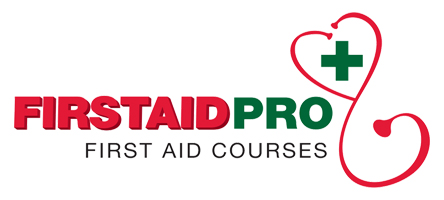Choking is when an object, fluid, or other obstruction restricts someone’s airways, preventing them from breathing normally. Choking is one of the most urgent medical emergencies you can encounter, as oxygen is one of our most basic and critical needs. A person that can no longer breathe will generally be dead within minutes.
Usually, choking happens by accident – when a blockage like food, vomit, or some small object gets lodged in the throat. For adults, it most commonly occurs while eating, while children – particularly infants and young children – often explore unknown small objects by putting them in their mouths. This means that any number of objects could be a choking hazard for them. It’s hard to predict precisely when a choking incident might occur. But there are many things we can do to minimise the risk of choking and protect ourselves and the people around us.
Choking Hazards For Adults
For adults, the most common choking incidents happen while we eat, as a piece of food goes down the wrong way and becomes lodged in the windpipe. There are many factors that can make this more likely, so it’s wise to stay mindful of the following things when eating.
Biting Off More Than You Can Chew – There’s a good reason that this phrase is a common saying – it’s something people do all the time, and it’s dangerous. Whether you’re hungry or because the food looks too irresistible, it can be tempting to take a bite that’s far too big. It’s also an easy way to get food lodged in your throat – especially something that compresses into a tight lump, like bread. Be wary of any mouthful that you can’t easily fit into your mouth.
Eating Too Quickly – This is something to bear in mind when we’re grabbing food in a hurry. If we’re “wolfing down food”, the odds of a mouthful going down wrong and getting lodged in the windpipe go up a lot. Take care to chew correctly, and don’t try to swallow too much at a time. Also, be wary of “tossing food in the mouth” games (such as catching lollies thrown by someone else), as the odds of the food going straight down the throat unchewed are alarmingly high.
Laughing Or Talking While Chewing & Swallowing – The chances of having an accident always go up when we’re doing two things at the same time. Although “not talking while your mouth is full” is a parent cliche, it’s also excellent advice. And although you can’t control when people make you laugh, it might be wise to lean forward rather than back if you do – lessening the chance of the food falling back down your throat.
Eating While Lying Down – Our Esophagus (the tube from your mouth to your stomach) runs downwards for a reason. Our bodies are designed to allow gravity to helps us get food down into the stomach. If you’re lying down when you eat, you don’t have gravity helping out, so the odds of something getting caught halfway down are higher. Best to sit up while you’re swallowing food.
Chewy Foods – Particularly chewy foods – like overcooked meat or some robust vegetables – are sometimes hard to chew up thoroughly. This means there’s a temptation to “choke it down” and let your stomach sort it out. The irony of that particular turn of phrase is that the odds of that chewy glob of food getting lodged in your throat as you do so are much higher. Make sure you put the work in to chew food properly before you swallow anything.
Sticky Foods – Particularly sticky foods like peanut butter can be an unexpected choking hazard. Apart from being quite gluey on their own, they can stick other foods to the inside of your mouth or throat – as you’ll know, if you’ve ever had peanut butter toast stuck to the roof of your mouth. Again, take care to chew things like this up properly before trying to swallow.
Drinking Heavily With Meals – Although it doesn’t present a choking risk by itself, heavy drinking can make all of the above situations more likely. Alcohol can impair our judgement and make us more likely to take risks and shortcuts – like all those above.
Choking Hazards For The Elderly
Just like most adults, once we’re getting into our fifties and sixties, the most significant choking risk is still food. But it’s worth remembering that as we get older, the risk of choking goes up considerably. Dental issues can make chewing harder, and we can have additional respiratory complications and health issues. Choking is actually a leading cause of death in the aged care industry. As we get closer to retirement, we need to be careful to follow the tips above – taking particular care as we chew and swallow.
Choking Hazards For Babies And Young Children
For many reasons, infants and young children (up to 4 years of age) are at particular risk of choking. Firstly, they’re less familiar with different types and textures of food and less experienced at chewing. Young children also instinctively explore things by placing them in their mouth and are far more inclined to try to swallow dangerous objects. And, of course, they’re far less capable of dislodging an object in their mouths and more prone to panic.
While minimising choking risks for adults is more a matter of being careful as you eat, for small children it’s predominantly a question of controlling what food and objects they have access to. The most significant choking hazards are objects between around 1cm and 3.5cm – between the size of the tip of your little finger and the size of a 50c coin. These are objects that are small enough to fit in their mouths and large enough to block their airway – putting them right in the danger zone. Round objects are particularly dangerous, as they tend to perfectly block the Esophagus – so grapes, marbles, and small rubber balls can be a particular risk.
If you have children aged four or younger (or you’re regularly visited by them), you should keep an eye out for objects in reach of the child that could be put in the mouth and choked on. You also need to pay attention to what food the child is eating and make sure potential choking hazards are removed or cut up into small pieces.
In particular, here are a few choking hazards to particularly watch out for:
- Chunks of meat or raw vegetables
- Nuts and seeds
- Sticky foods such as peanut butter
- Whole grapes
- Hard candy
- Soft lollies
- Small objects such as coins and small batteries
- Toys with small parts (like lego)
- Small balls & marbles
- Soft plastic and rubber such as plastic bags and deflated balloons
Choking While Unconscious
If someone is unconscious on the floor or possibly suffering a seizure, the Choking Hazards involved are quite different. At this point, it’s less about careful eating and more about making sure nothing is obstructing the airway. In such cases, there are a few things that can help.
Vomit / Fluids – If someone is unconscious or suffering from a “tonic-clonic seizure” (where they fall to the floor and convulse), and there are signs they might have vomit or liquid in their mouth, they should be rolled onto their side as soon as possible. This will hopefully allow the fluid to flow naturally out of the mouth and throat, clearing the airways.
Blockages – Medical opinion is vigorously divided on the issue of whether you should attempt to remove a blockage in someone’s throat with your fingers. On the one hand, a blockage to the airway can be life-threatening and should be removed as soon as possible. On the other hand, there is the danger of accidentally pushing it further down the Esophagus and making the problem worse. In general, if you can see a blockage in an unconscious adult’s mouth and are confident you can remove it without pushing it further inside, you should do so. Take care to minimise infection risk, such as wearing disposable gloves if possible. Simply use two fingers and sweep the blockage to the side.
You should, however, never put your fingers in the mouth of someone who’s still conscious or having a seizure – as you might get bitten!
The Tongue – It’s impossible for a person – whether unconscious or suffering a seizure – to swallow their tongue. This is something of a medical myth. There is some chance of the tongue partially obstructing an airway, or being bitten and causing blood flow into the throat. These are two more good reasons to place an unconscious person on their side – where gravity can help with both these issues. Under no circumstances should you be pushing a foreign object – such as a spoon – into someone’s mouth when they’re unconscious. Doing so could harm the person and is more likely to increase the risk of choking.
Knowing What To Do
It’s always valuable to think ahead and do what you can to prevent Choking Hazards around you. But there’s no guarantee that you won’t someday find yourself either choking on something, or in the presence of someone else who’s choking. If you’re the one in trouble, it’s worth remembering the universally recognised sign for choking – arms crossed across your chest, hands clutching at your throat. This is important, as you’ll generally not be able to speak if you’re choking.
If you want to be able to help someone who’s choking on food or something they’ve inhaled, you should invest a little time in getting professional first aid training. A single day training course can equip you to respond to a wide variety of medical emergencies, including choking, seizures and CRP on a person (adult or infant) who’s stopped breathing. When it comes to getting value out of your time, you’d be hard-pressed to do better than that!
